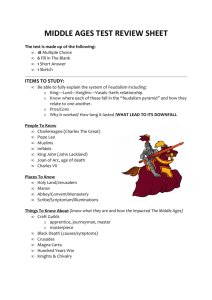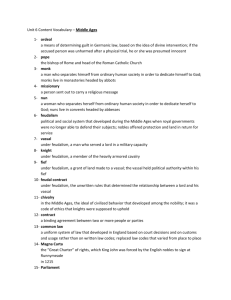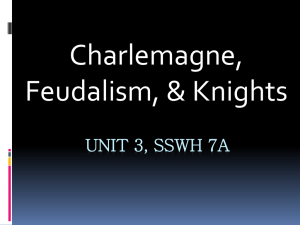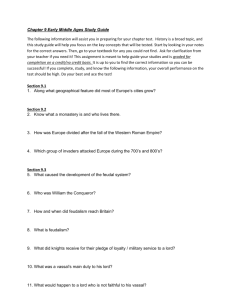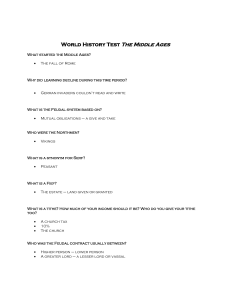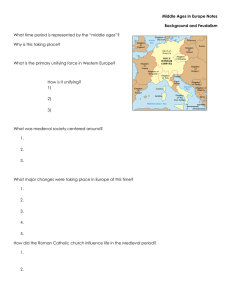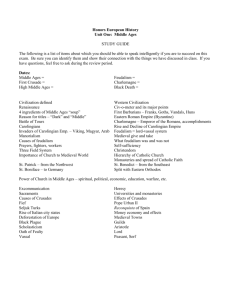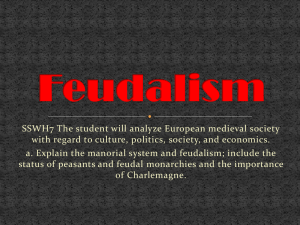Charlemagne after his death, the Carolingian Empire was split into three... sections
advertisement
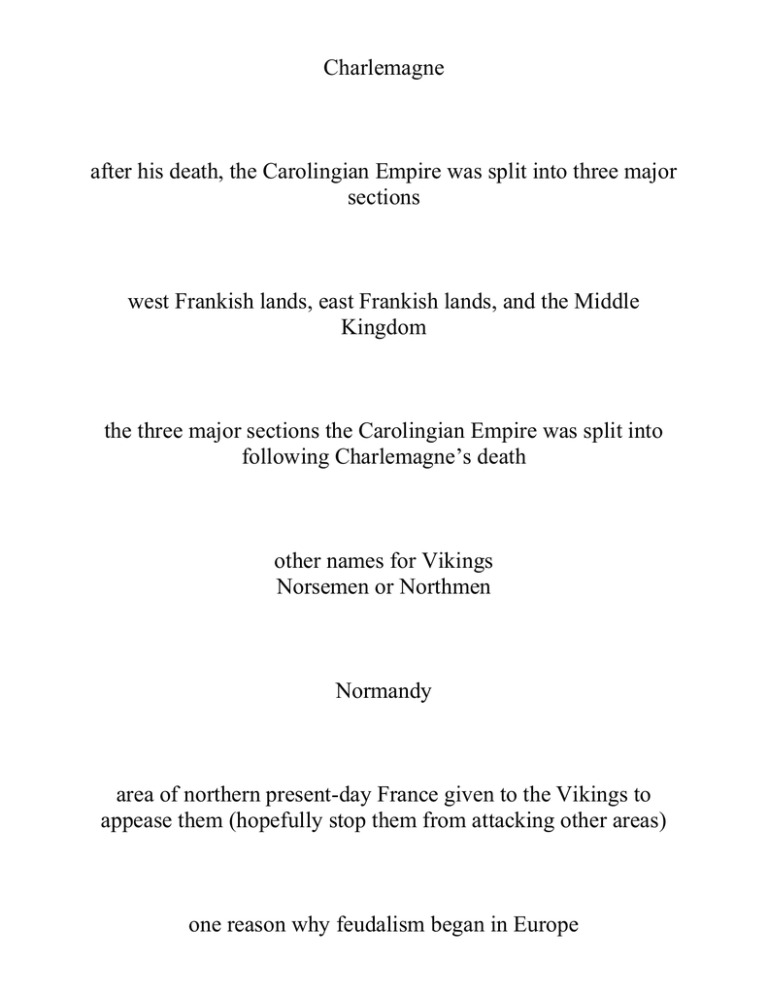
Charlemagne after his death, the Carolingian Empire was split into three major sections west Frankish lands, east Frankish lands, and the Middle Kingdom the three major sections the Carolingian Empire was split into following Charlemagne’s death other names for Vikings Norsemen or Northmen Normandy area of northern present-day France given to the Vikings to appease them (hopefully stop them from attacking other areas) one reason why feudalism began in Europe fall of the Carolingian Empire = no more protection for the people feudalism political and social order that developed during the Middle Ages when royal governments were no longer able to defend their subjects vassal under feudalism, a man who was at the ready to serve a lord in a military capacity when necessary knight under feudalism, a member of the heavily armored cavalry mail armor made of metal links or plates stirrups allowed horsemen to wield long lances that enabled them to act as battering rams act of homage; oath of fealty name given to the ceremony a man performed to become a vassal to a lord fief under feudalism, a grant of land made to a vassal on which the vassal held political authority feudal contract under feudalism, the unwritten rules that determined the relationship between a lord and his vassal tournament contest in which knights could demonstrate their fighting skills joust individual combat between two knights chivalry in the Middle Ages, the ideal of civilized behavior that developed among the nobility; a code of ethics that knights were supposed to uphold why the population of Europe increased dramatically during the High Middle Ages Europe was more peaceful; the climate changed allowing for more food production carruca a heavy, wheeled plow with an iron plowshare reasons for increased food production during the Middle Ages climate change; changes in technology; the use of crop rotation fallow unplanted manor an agricultural estate that a lord ran and peasants worked serfs peasants legally bound to the land of manor Hanseatic League an alliance of more than 100 northern European cities that banded together for mutual trade protection and economic opportunity bourgeoisie the middle class, including merchants, industrialists, and professional people guilds organizations that set the standard for the quality of the articles produced and even fixed the price at which the finished goods could be sold 1066 the year of the Norman Conquest Battle of Hastings William of Normandy conquered King Harold of England Domesday Book census conducted by the Normans common law a uniform system of law that developed in England based on court decision and on customs and usage rather that on written law codes; replaced law codes that varied from place to place Thomas a Becket Archbishop of Canterbury under Henry II of England; said only the Church was allowed to punish clergymen, not the king; murdered by knights who thought they were doing what the king wanted Magna Carta gave written recognition to the fact that the relationship between king and vassals was based on mutual rights; King John was forced to sign this in 1215, limiting his power Parliament in thirteenth-century England, the representative government that emerged; it was composed of two knights from every county two people from every town, and all the nobles and bishops throughout England Estates-General first French parliament; comprised of three different orders, each comprised of different classes of people: the clergy, the nobles, and the townspeople and peasants Holy Roman Empire the eastern Frankish kingdom; given this name by Germanic Frederick I as he attempted to join Italy with the Germanic lands already under his rule

